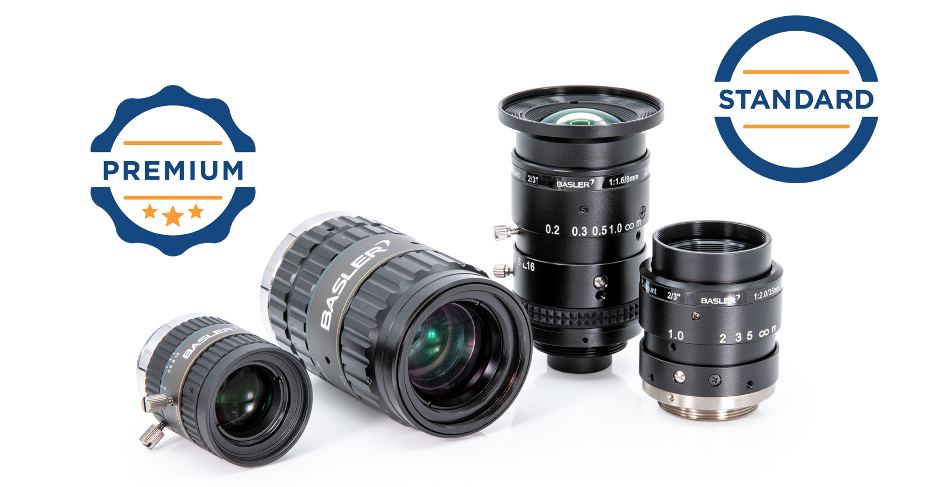The camera manufacturer Basler is further enhancing its Basler Lens Portfolio and offers the right lens for every Basler camera. The Basler Lens series comprises the two product lines: Standard and Premium.
 Image credit: Basler Lenses portfolio
Image credit: Basler Lenses portfolio
Combined with a camera and lighting, lenses are instrumental in determining the image quality. Of interest when choosing the right lens is the balance between the price and the required imaging performance, i.e. high resolution with optimal image quality. Basler offers the right lens for both scenarios.
The Standard product line
The lenses in the Standard product line are suitable for standard vision applications, with an excellent price/performance ratio. These lenses have a needs-oriented design and correspond to the lower requirements of many cost-sensitive applications. Thanks to their solid basic performance, they are ideal for fast cameras with a lower resolution.
The Premium product line
The lenses in the Premium product line are designed and tested for more demanding applications. Thanks to a very high resolution, low distortion and low vignetting, they offer the best image quality. This makes them optimal for cameras with very high resolutions for the analysis of even smallest structures. The cost aspect was also taken into account for lenses in this product line.
Both new product lines support the popular image circles of sensors available in Basler cameras, from 1/2.5” to 1.1”, as well as all conventional focal lengths. The lenses are equipped with a C-mount and can also be conveniently used with CS-mount cameras by use of an adapter.
Basler helps users choose the appropriate lens with its convenient Lens Selector. This tool makes it easy to search for the right lens for Basler area scan cameras. The Lens Selector is based on professional calculations. Visitors to http://www.baslerweb.com/lens-selector can enter their application data (such as required angle of view, working distance, object size, etc.). The Lens Selector then calculates the necessary focal length and proposes suitable lenses for the size and resolution of the sensor.